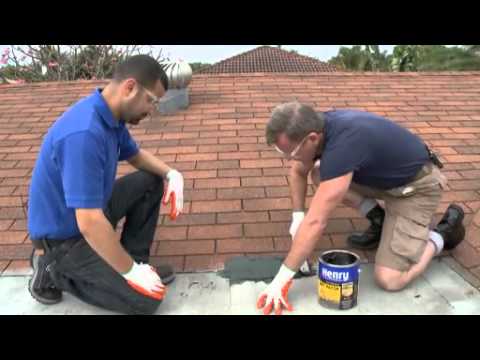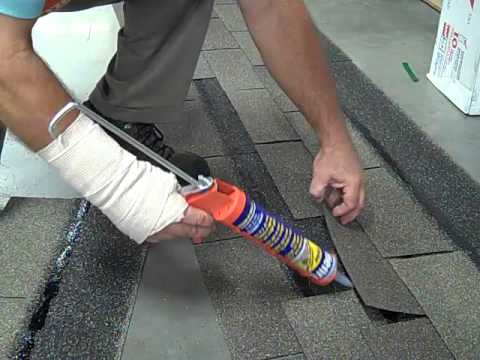If you find yourself facing a roof in need of patching, you’re probably eager to have it fixed as quickly as possible. After all, a damaged roof can lead to leaks and further costly repairs. Fortunately, there are several fast and efficient methods to patch a roof that you can consider. Whether it’s using asphalt shingles, applying a roof sealant, or using a patching compound, this article will explore the various options available to ensure you can address that roof issue swiftly and effectively.

Choosing the right materials
When it comes to patching a roof, choosing the right materials is crucial for a successful and long-lasting repair. Evaluating the extent of the damage is the first step in determining what materials you will need. Take a close look at the area that needs to be patched and assess how severe the damage is. Is it just a small area that needs fixing, or is the damage more widespread?
Another factor to consider when choosing materials is the weather conditions in your area. Different roofing materials have different properties and can withstand varying weather conditions. For example, if you live in an area with harsh winters and heavy snowfall, you may want to choose a roofing material that is more resistant to moisture and can withstand the weight of snow.
Once you have evaluated the extent of the damage and considered the weather conditions, it is time to select the appropriate roofing material. Some common options include asphalt shingles, metal roofing, tile, and flat roofing materials. Each material has its own advantages and disadvantages, so it’s important to do some research and choose the one that best suits your needs.
Preparing the roof for patching
Before you start patching the roof, it is essential to properly prepare the damaged area. This will ensure that the patch adheres correctly and lasts a long time. The first step in preparing the roof is to clean the damaged area. Use a broom or brush to remove any dirt, debris, or loose materials from the surface. This will create a clean and smooth base for the patching materials.
Next, remove any loose or damaged shingles in the area that needs to be patched. You can use a roofing hammer or a pry bar to carefully lift and remove the shingles. Be cautious not to cause further damage to the surrounding area. Once the damaged shingles are removed, you will have a clear and stable surface to work with.
Finally, ensure that the roof is dry and free from any debris before applying the patching materials. It is important to wait for a dry day to carry out the repairs, as moisture can affect the adhesion of the patch. Additionally, removing any debris such as leaves or branches will help prevent any interference with the repair process.
Temporary patching methods
If you need a quick fix to temporarily patch a roof, there are several methods you can utilize. One option is to use roofing cement and a patching fabric. Apply a layer of roofing cement to the damaged area and then cover it with the patching fabric. Press down firmly to ensure good adhesion. The roofing cement acts as a sealant, while the patching fabric provides extra reinforcement.
Another temporary patching method is to apply a patching tape. This self-adhesive tape is specifically designed for repairing roof leaks and can provide a quick and easy solution. Simply apply the tape over the damaged area, ensuring that it is securely pressed down to create a watertight seal.
Utilizing a roofing sealant is another option for temporary patching. Roofing sealants come in various forms such as liquid or caulk. They are typically applied with a caulking gun and can be effective in sealing small cracks or gaps in the roof.
While these temporary patching methods can provide immediate relief, it is important to keep in mind that they are not a permanent solution. It is essential to schedule a proper repair or replacement of the damaged area as soon as possible to prevent further issues.
Permanent patching methods
For a more long-term solution, there are several permanent patching methods that can be used to repair a roof. One option is to replace the damaged shingles. This method is most commonly used for asphalt shingle roofs. Carefully remove the damaged shingles and replace them with new ones. Ensure that the new shingles are properly aligned and secured with roofing nails.
Another permanent patching method is to use a roof patching compound. These compounds are specifically designed to seal and repair small cracks, holes, or damaged areas on different types of roofing materials. Apply the compound to the damaged area and spread it evenly using a putty knife. Smooth out the compound and allow it to dry according to the manufacturer’s instructions.
If the damage is more extensive, applying a roofing patch may be necessary. Roofing patches are larger sections of roofing material that can be used to cover a damaged area. Cut the patch to the appropriate size and shape and apply it over the damaged area, ensuring a secure and watertight fit. Use roofing adhesive to secure the patch in place.

Utilizing professional services
While DIY patching methods can be effective, sometimes it is best to leave the job to the professionals. Hiring a roofing contractor can ensure that the repairs are done correctly and efficiently. When considering professional services, it is important to do your research and select a reputable and experienced contractor.
Start by getting recommendations from friends, family, or neighbors who have had roofing work done recently. Their personal experiences can be valuable in finding a reliable contractor. Additionally, you can request quotes from multiple contractors to compare prices and services.
When selecting a roofing contractor, it is crucial to ensure that they are licensed and insured. A license guarantees that the contractor has met the necessary requirements and regulations in your area. Insurance coverage protects you from liability in case of any accidents or damage that may occur during the repair process.
Safety precautions
When patching a roof, safety should always be a top priority. Taking the necessary precautions can prevent accidents and ensure that the job is completed without any injuries. Here are some safety tips to keep in mind:
- Wear appropriate protective gear, including sturdy shoes, a hard hat, safety goggles, and gloves.
- Use ladders correctly by ensuring they are properly secured and positioned on a stable surface. Always maintain three points of contact when climbing up or down a ladder.
- Avoid working alone whenever possible. Having someone nearby can provide assistance in case of an emergency or accident.
By following these safety precautions, you can minimize the risk of accidents and injuries while patching your roof.

Maintenance and prevention
Regular maintenance and timely repairs are key to extending the lifespan of your roof and preventing future damage. It is essential to inspect your roof regularly for any signs of wear, damage, or potential issues. This can include checking for loose shingles, cracks, or leaks. Addressing small repairs promptly can prevent them from turning into larger, more expensive problems in the future.
Implementing preventive measures can also help protect your roof from damage. This can include trimming overhanging branches, clearing debris from gutters and drains, and ensuring proper ventilation in the attic. Regularly cleaning the roof surface can also help remove any dirt or moss buildup, which can lead to water retention and damage.
By taking proactive measures and addressing any issues promptly, you can ensure the longevity and durability of your roof.
Tools and equipment
Having the right tools and equipment is essential for a successful roof patching project. Here are some essential tools you may need:
- Roofing hammer: This specialized hammer is designed for roofing work and has a flat head for driving nails.
- Utility knife: A utility knife with a sharp blade is useful for cutting and trimming roofing materials.
- Chalk line: A chalk line helps create straight and accurate guidelines for aligning shingles or patches.
- Roofing adhesive: Choose a roofing adhesive that is compatible with your roofing material to ensure proper adhesion.
- Ladder: A sturdy ladder is necessary to access the roof safely and carry out the patching work.
Having these tools readily available can make the patching process more efficient and effective.

Considerations for different types of roofs
Different types of roofs require different patching methods and materials. Here are some considerations for various types of roofs:
Asphalt shingle roofs
Asphalt shingle roofs are one of the most common types of roofs in residential properties. When patching an asphalt shingle roof, it is important to select replacement shingles that match the existing ones in color, size, and material. This ensures a seamless and aesthetically pleasing repair. Use roofing nails to secure the new shingles in place.
Metal roofs
Patching a metal roof may require the use of metal patches, sealants, or specialized adhesives designed for metal surfaces. It is important to clean and prepare the damaged area properly to ensure good adhesion. Follow the manufacturer’s instructions for the specific products being used.
Tile roofs
Tile roofs require careful handling during the patching process to avoid further damage. Matching replacement tiles should be sourced to ensure a consistent appearance. The damaged tiles can be carefully removed and replaced with the new ones. Use a roofing adhesive to secure the tiles in place.
Flat roofs
Flat roofs often require a different approach when it comes to patching. Roofing membranes or specialized sealants may be used to cover and seal any damaged areas. It is important to ensure that the patch is securely adhered to the flat surface to prevent any future leaks.
Consider these specific requirements for your type of roof to ensure a successful repair.
Time and cost considerations
Patching a roof can vary in terms of time and cost, depending on the extent of the damage, the size of the repair area, and the materials used. Assessing the time required for the patching process is important to plan your schedule accordingly. Consider factors such as the type of repair method chosen, weather conditions, and any additional preparations or inspections that may be necessary.
In terms of cost, it is important to factor in the price of materials, labor if hiring a contractor, and any additional expenses such as permits. Obtaining quotes from different contractors and suppliers can help you compare prices and make an informed decision. Keep in mind that while temporary patching methods may be more cost-effective in the short term, permanent repairs may provide a better long-term solution.
By considering both the time and cost aspects, you can plan your roof patching project effectively and ensure a smooth and efficient process.
In conclusion, patching a roof requires careful evaluation of the damage, consideration of weather conditions, and the selection of appropriate materials. Properly preparing the roof, utilizing temporary or permanent patching methods according to the extent of damage, and implementing safety precautions are crucial for a successful repair. Regular maintenance, addressing small repairs promptly, and implementing preventive measures can help extend the lifespan of your roof. Taking into account specific considerations for different types of roofs, having the right tools and equipment, and considering time and cost factors are essential for a smooth and effective roof patching process.
